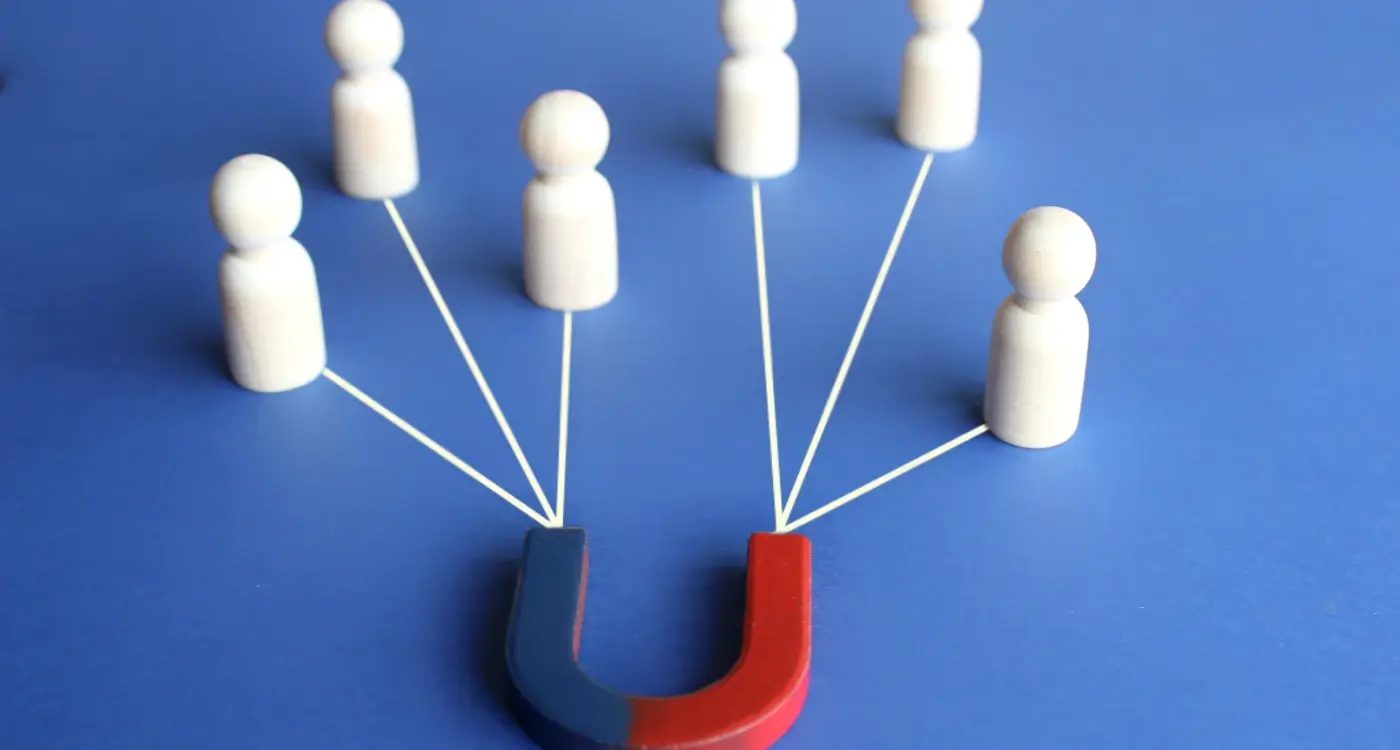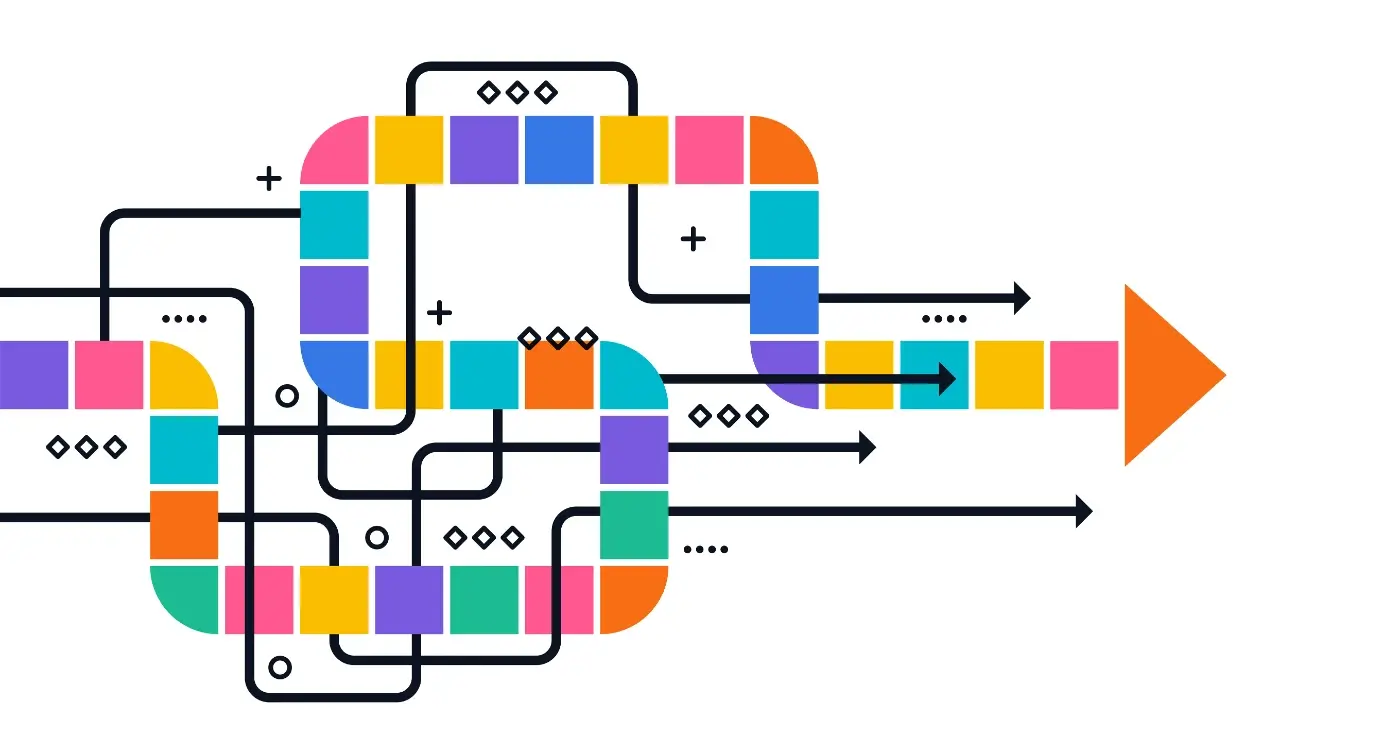How Do You Pick the Right Game Elements for Your Industry?
Game elements in business apps have become one of those things that everyone talks about but few people actually get right. I've been building apps across different industries for years now, and I can tell you that slapping a few badges and points onto your app isn't going to magically increase user engagement—it's actually more likely to annoy people if you do it wrong.
The thing is, gamification works brilliantly when it's done thoughtfully. But here's where most people mess up: they try to use the same game elements that work in consumer apps for completely different industries. A healthcare app needs different motivational triggers than a fitness app, which needs different ones than a business productivity tool. What gets a teenager excited about using a social media app will probably feel childish and out of place in a professional environment.
The best gamification feels so natural that users don't even realise they're being gamified—they just know the app feels good to use and keeps them coming back.
I've seen finance apps try to use cartoon-style badges (which users found patronising), fitness apps with overly competitive leaderboards (which actually demotivated beginners), and business tools with meaningless point systems that nobody cared about. The key is understanding what actually drives your specific users in your specific industry context. Some industries respond well to progress tracking, others to social recognition, and some work best with subtle achievement systems that feel more like helpful feedback than games. Getting this balance right can transform how people interact with your app—but getting it wrong can make your perfectly good app feel gimmicky and unprofessional.
Understanding Game Elements in Business Apps
Right, let's get one thing straight from the start—adding game elements to your business app isn't about turning it into Candy Crush. I mean, that would be mental, wouldn't it? What we're talking about here is using specific mechanics that make people want to keep using your app, but in a way that actually helps your business goals.
Game elements work because they tap into basic human psychology. People like to feel they're making progress, they enjoy small wins, and they want to feel accomplished. It's not rocket science, really—it's just understanding what motivates people to keep coming back.
The Core Elements That Actually Work
After years of building apps across different industries, I've seen which game mechanics work and which ones just annoy users. Here's what genuinely makes a difference:
- Progress tracking that shows real achievement
- Reward systems tied to valuable actions
- Social recognition for meaningful contributions
- Clear goals that align with user needs
- Feedback loops that feel immediate and relevant
The key thing to remember? These elements should feel natural, not forced. If your users notice you're trying to "gamify" their experience, you've probably gone too far. The best implementations are the ones where users don't even realise they're engaging with game mechanics—they just know the app feels good to use.
But here's where it gets tricky—what works brilliantly in a fitness app might completely backfire in a banking app. A healthcare app needs different motivators than an e-learning platform. Understanding your industry's specific needs and user expectations is what separates apps that succeed from those that just feel gimmicky.
Choosing the Right Rewards for Your Users
Getting rewards right is probably one of the trickiest parts of adding game elements to business apps. I've seen so many apps fail because they threw badges at users without thinking about what actually motivates their specific audience. The key thing to remember? Different industries need completely different reward systems.
In healthcare apps, people are motivated by progress towards personal health goals—think streak counters for medication adherence or milestone badges for fitness achievements. These users want to see tangible improvements in their wellbeing, not flashy point systems. Financial apps work differently; users respond well to savings milestones and educational achievements that help them feel more confident about money management.
But here's where it gets interesting—timing matters just as much as the reward type. Early rewards should come quickly to build momentum (we're talking within the first few interactions), whilst long-term rewards need to feel genuinely meaningful. A "logged in 100 days" badge means nothing if the app hasn't provided real value during those days.
Match your rewards to real user outcomes, not arbitrary app actions. If your fitness app rewards users for opening the app rather than completing workouts, you're training the wrong behaviour.
I always tell clients to think about what success looks like for their users, then work backwards. If you're building an education app, success might be skill mastery—so reward knowledge gained, not just time spent. For productivity apps, it could be tasks completed or goals achieved. The reward should feel like a natural celebration of something the user actually wanted to accomplish anyway.
Points and Badges That Actually Work
Right, let's talk about points and badges—because honestly, most apps get this completely wrong. I've seen so many projects where clients want to throw points at everything users do, thinking it'll magically boost engagement. Spoiler alert: it doesn't work like that.
The secret sauce? Your points need to mean something beyond just being a number that goes up. I worked on a fitness app where we initially gave points for opening the app daily. Sounds logical, right? Wrong. Users gamed the system, opening and closing the app just to rack up points. Engagement actually dropped because we weren't rewarding the behaviour we actually wanted—exercise.
Here's what actually works: tie your points directly to actions that benefit both the user and your business. In that same fitness app, we switched to awarding points only when users completed workouts or logged meals. Suddenly, meaningful engagement shot up 40%.
Points That Drive Real Behaviour
- Progressive rewards—early achievements are easy, later ones require genuine commitment
- Expiring points that encourage regular use without feeling punitive
- Bonus multipliers during specific times or for completing streaks
- Points that unlock practical features rather than just cosmetic badges
Badges work best when they tell a story about the user's journey. Instead of "Logged in 10 times," try "Weekend Warrior" for users who stay active on weekends. It's the difference between a participation trophy and recognition that actually feels personal.
The golden rule I follow? If you removed the points tomorrow, would users still want to perform the action? If the answer's no, you're probably just bribing people—and that never works long term.
Making Progress Bars Feel Meaningful
Progress bars are everywhere in apps these days—but most of them are bloody useless, if I'm being honest. You see them loading content, showing download progress, tracking workout sessions... yet somehow they feel completely meaningless to users. The difference between a progress bar that genuinely motivates and one that just sits there? It's all about making users feel like they're actually getting somewhere worthwhile.
When I'm designing progress bars for business apps, I always ask myself: what's the real value we're showing here? Is it just "you've completed 3 out of 10 tasks" or are we actually demonstrating progress towards something the user genuinely cares about? The best progress bars connect to outcomes that matter. A project management app showing "2 days ahead of deadline" hits differently than "70% complete"—one shows productivity, the other just shows... well, maths.
Making Every Step Count
The secret sauce isn't the visual design (though that matters); it's making sure each increment feels like genuine achievement. In healthcare apps, I've seen progress bars that track "days tobacco-free" work far better than generic "health goals completed" because users can visualise the actual health benefits building up. Same principle applies to business apps—show progress towards real business outcomes, not just task completion.
The most effective progress bars show users they're getting closer to something they already want, not something your app thinks they should want
One thing that really works is breaking larger goals into smaller, meaningful chunks. Instead of one massive progress bar for "complete onboarding," try showing progress through distinct phases like "account setup," "team integration," and "first project launch." Each phase completion feels like a proper win, and users can see exactly what comes next. It's basically giving people multiple finish lines instead of one distant goal that feels impossible to reach.
When Leaderboards Help Your Business Goals
Leaderboards can be proper business drivers when you get them right, but they're also one of the most misunderstood game elements I see clients wanting to add. Everyone thinks they need one because it sounds competitive and exciting—but honestly? Most apps would be better off without them.
The thing about leaderboards is they only work when competition actually matches what your users want to do anyway. If you're running a fitness app and people are already trying to beat their personal bests, then showing how they rank against others makes sense. But if you're building a banking app and you create a leaderboard for "most transactions this month"... well, that's just weird, isn't it?
Industries Where Leaderboards Actually Work
I've seen leaderboards drive real business results in specific situations. Sales teams love them because competition is already part of their culture. Learning apps use them brilliantly—students naturally want to see how they're doing compared to classmates. Fitness and health apps work well too, because people are already competitive about their progress.
- Sales and CRM apps - teams are naturally competitive
- Educational platforms - students want to compare progress
- Fitness and wellness apps - health goals are inherently competitive
- Productivity tools for teams - can motivate collaborative competition
- Gaming and entertainment - obvious fit for competitive elements
But here's what I always tell clients: leaderboards can backfire badly if they make people feel rubbish about themselves. If someone's always at the bottom, they'll probably just stop using your app altogether. You need to think about different ways to rank people—maybe weekly leaderboards that reset, or categories based on experience levels.
The key question isn't whether leaderboards are good or bad; it's whether your users actually want to compete with each other in the first place.
Getting Social Features Right
Social features can make or break your app's game elements. I've seen apps where the social stuff feels forced—like someone just stuck a leaderboard on top and called it a day. But when you get it right? That's when users start coming back daily because they genuinely want to see what their mates are up to.
The key is understanding that social features aren't just about competition. Sure, some industries thrive on friendly rivalry—fitness apps love their step-counting battles, and sales teams go mad for performance leaderboards. But other sectors need a softer touch. In healthcare apps, you don't want patients feeling rubbish because they're not hitting the same goals as others; instead, you might focus on community support where people can share encouragement without the pressure.
Building Real Connections
The best social game elements create genuine connections between users. Team challenges work brilliantly in workplace apps because colleagues already have relationships. But in consumer apps, you need to think about how strangers become friends. Maybe its shared goals, maybe it's helping each other out—whatever it is, it needs to feel natural, not forced.
Start with one social feature and nail it before adding others. A brilliant team challenge beats five mediocre social features every time.
Privacy Matters More Than Ever
Don't forget that not everyone wants their progress broadcast to the world. Give people control over what they share and with whom. Some users love public leaderboards, others prefer small groups, and some want to keep things completely private. The smart approach? Let them choose their comfort level and adjust as they go.
Testing What Works for Your Audience
Here's something I wish more clients understood—you can't just guess what game elements will work for your users. I mean, you can try, but you'll probably get it wrong! The fitness apps I've built respond completely differently to points systems compared to the financial apps. It's a bit mad really, but users in different industries have totally different expectations about what feels rewarding.
The key is starting small and testing one element at a time. Don't launch with badges, points, leaderboards and progress bars all at once—you won't know which ones are actually driving engagement. I usually recommend picking your simplest game element first (often a basic progress bar) and seeing how people respond to it.
What You Should Actually Measure
Most people look at the wrong metrics when testing game elements. They get excited about badge collection rates or point accumulation, but that's not what really matters for your business. Here's what I track instead:
- Daily active users before and after adding game elements
- Session length changes (are people spending more time in your app?)
- Feature completion rates for your core business functions
- User retention at 7, 14, and 30 days
- App store ratings and review sentiment
You know what? Sometimes the data will surprise you. I worked on an e-commerce app where adding a simple "items viewed" counter actually decreased purchases because people started treating shopping like a game instead of focusing on buying. We removed it within two weeks—and that's perfectly fine! Testing means being willing to kill features that don't work, even if they seemed like good ideas initially.
The most successful apps I've built test new game elements with small user groups first, then gradually roll them out based on what the data shows.
Common Mistakes That Kill User Interest
After working on hundreds of business apps, I can spot the mistakes that kill user engagement from a mile away. The biggest one? Throwing every single game element at users all at once. It's like being hit with confetti cannons, achievement bells, and scoreboards the moment you open the app—honestly, it's overwhelming and users just switch off.
I've seen so many apps fail because they copied exactly what worked for gaming apps without thinking about their own industry. A healthcare app doesn't need the same competitive features as a fitness tracker; a finance app shouldn't feel like a casino. But developers keep making this mistake, slapping on leaderboards and flashy badges that make no sense for their users' actual goals.
The Wrong Rewards Problem
Another killer mistake is offering rewards that nobody actually wants. I worked with a client who was giving out digital certificates for completing basic tasks in their productivity app. Users ignored them completely because the rewards felt disconnected from why they were using the app in the first place.
The most successful business apps treat game elements like seasoning—a little goes a long way, and the wrong combination ruins the whole dish
Ignoring Your Users' Real Motivations
But here's what really gets me: apps that never test their game elements with actual users. They build elaborate point systems and progress tracking without asking if their audience finds these features helpful or annoying. A banking app's users might want security and efficiency, not points for checking their balance. Getting this wrong doesn't just waste development time—it actively pushes users away from your app because it feels gimmicky rather than genuinely useful for their needs.
Right then, we've covered a lot of ground here—from understanding what makes users tick to avoiding the pitfalls that can sink your gamification efforts before they even get started. The truth is, picking the right game elements for your industry isn't rocket science, but it does require you to think like your users and test like your business depends on it. Because, well, it probably does.
After building apps across healthcare, fintech, retail and pretty much every other sector you can think of, I've learned that there's no magic formula. What works brilliantly for a fitness app might feel completely wrong in a banking application. A leaderboard that drives engagement in education could create unnecessary stress in mental health apps. It's all about context, and that context comes from understanding your specific users in your specific industry.
The biggest mistake I see companies make? They try to gamify everything at once. Start small, test one element, see how your users respond, then build from there. Your users will tell you what works if you're paying attention to the data. And remember—game elements should feel natural, not forced. If you're having to explain why something is fun, it probably isn't.
Most importantly, never forget that gamification is just a tool. It won't fix a poor user experience or make up for an app that doesn't solve real problems. But when you get it right, when those game elements align perfectly with your users' motivations and your business goals? That's when you see real engagement, genuine habit formation, and the kind of user retention that makes all this effort worthwhile.
Share this
Subscribe To Our Learning Centre
You May Also Like
These Related Guides

How Do You Design Social Hooks That Keep Users Coming Back Daily?

How Should You Order Your App's Welcome Screens?



